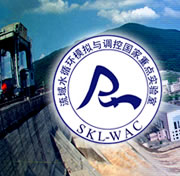《Soil and Tillage Research》杂志刊登“利用PLAXIS程序模拟土壤-轮胎接触面竖直应力分布来预测耕种土壤压实度的新方法”
作者:Pauline Défosseza, Guy Richardb
刊物:《Soil and Tillage Research》,95卷第1-2期,277—287页
关键词:土的压实;竖直压力分布;PLAXIS程序;有限元模型;容重
摘要:农业机械对土的压实会对庄稼的生产和环境产生不利影响。本文采用基于有限元方法的不同模型作为计算工具对土的压实度和土壤性质函数进行计算分析。由于竖直应力分布是不均匀的,其决定于土壤和轮胎的性质,因此土壤表面竖直应力的分布估计是数值模拟时首先应解决的问题。然而,在很多有限元压实模型中均可以考虑土壤—轮胎接触面的不均一的应力分布,因此其可以用来预测耕种土壤的压实强度。本文使用PLAXIS有限元软件提出了一种新的方法对土壤—轮胎接触面主动机械运动方向的竖直应力分布进行数值模拟。该方法将土壤表面作为梁(以它的几何维数和抗弯刚度为特点)来处理,并在土壤表面加载类一个不均匀的应力来模拟轮胎施加的力。通过土壤表面变化梁的抗弯刚度和土壤的力学参数得到了不同形式的应力分布。通过模拟观察到了接触边界面的边缘土壤类型可改变应力分布形式,对于沙得到了抛物线的应力分布形式,然而对于粘土得到了U形应力分布形式。梁的抗弯刚度使力的分布从均匀变化到不均匀(抛物线或者U式),该研究结果与其他文献中的不同土壤的应力分布的测量结果相一致。最后对使用PLAXIS模拟的体积密度和在土壤上进行压实试验获得的数据进行了比较。结果表明,使用U形应力分布代替均一的应力分布会提高数值模拟的结果。因此,在土壤表面使用各种抗弯刚度梁(圆筒)通常在土壤—工具压实模拟中可以形成合适的竖直应力分布形式。
A new approach for modeling vertical stress distribution at the soil/tire interface to predict the compaction of cultivated soils by using the PLAXIS code
Author: Pauline Défosseza, Guy Richardb
Journal: < Soil and Tillage Research > Volume 95, Issues 1–2, September 2007
Keywords: Soil compaction; vertical stress distribution; PLAXIS code; FEM models; Bulk density
Abstract: Soil compaction by agricultural machines can have adverse effects on crop production and the environment. Different models based on the Finite Element Method have been proposed to calculate soil compaction intensity as a function of vehicle and soil properties. One problem when modeling soil compaction due to traffic is the estimation of vertical stress distribution at the soil surface, as the vertical stress is inhomogeneous (non-uniform) and depends on soil and tire properties. However, uniform stress distribution at the soil/tire interface is used to predict the compaction of cultivated soils in most FEM compaction models. We propose a new approach to numerically model vertical stress distribution perpendicular to the driving direction at the soil/tire interface, employing the FEM models of PLAXIS code. The approach consists of a beam (characterized by its geometric dimensions and flexural rigidity) introduced at the soil surface and loaded with a uniform stress with the aim to simulate the action of a wheel at the soil surface. Different shapes of stress distribution are then obtained numerically at the soil surface by varying the flexural rigidity of the beam and the mechanical parameters of the soil. PLAXIS simulations show that the soil type (soil texture) modifies the shape of the stress distribution at the edges of the contact interface: a parabolic form is obtained for sand, whereas a U-shaped is obtained for clay. The flexural rigidity of the beam changes the shape of distribution which varies from a homogenous (uniform) to an inhomogeneous distribution (parabolic or U-shaped distribution). These results agree with the measurements of stress distributions for different soils in the literature. We compared simulations of bulk density using PLAXIS to measurement data from compaction tests on a loamy soil. The results show that simulations are improved when using a U-shaped vertical stress distribution which replaces a homogenous one. Therefore, the use of a beam (cylinder) with various flexural rigidities at the soil surface can be used to generate the appropriate distribution of vertical stress for soil compaction modeling during traffic.
原文链接:http://www.sciencedirect.com/science/article/pii/S0167198707000475#
翻译:王丽娟 审核:安鹏

